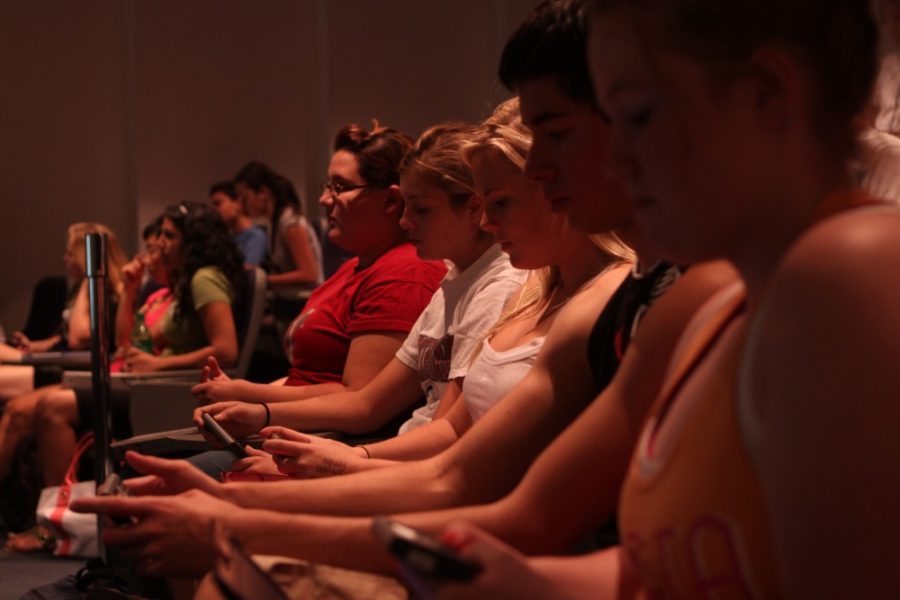Freshman Jamie Douglas made it to her Individuals and Cultures 101 class on time, but when she looked for her clicker to sign in to the class she realized she had left it at home.
She rushed home to get the clicker, a remote control-like tool used to take attendance and encourage participation in classes, but by the time she made it back to school, it was too late and she had lost the attendance points for the day.
“”Why should I stay if I’m not going to get credit and the lectures are online?”” she said.
Clickers aren’t new to campus — they’ve been mandatory in some classes since at least the fall 2007 semester, said Cindy Hawk, associate director of the UofA Bookstore. But in the two years since, the number of classes using clickers has more than doubled.
In total, 25 classes use clickers, Hawk said.
The university currently uses three different clickers. The Interwrite clicker costs $52, the iClicker costs $37.50 and the Turning Technologies clicker costs $53.50. However, an iPhone, iTouch or certain computers can be used in place of the Turning Technologies clicker.
Since there are several different devices, it’s been difficult registering them in a timely manner, said Aaron Walker, operations lead for the Office of Student Computing and Resources.
“”A lot of people do have questions about them, and I think it’s just confusing because the university hasn’t adopted a standard clicker,”” Walker said.
Adopting a standard isn’t easy because the technology is so new that it’s difficult to determine which is best, he said.
“”It’s difficult to make a firm decision on which one should be used,”” Walter said. “”And all the colleges would have to sign on.””
Douglas had to buy two different clickers for two different classes, totaling roughly $100.
“”It’s a little outrageous,”” she said.
Clickers are not just used in the giant NATS and TRAD classes, Hawk said, but in geography, psychology, math and engineering classes, to name a few.
Clickers are used to make larger classes more efficient, Walker said.
“”For a 1,000 or a 300-person lecture it’s the smart choice,”” Walker said. “”There’s no way to give a quiz quickly or take attendance unless you did have those clickers.””
Despite facing the difficulty of teaching 1,000-student classes in Centennial Hall, Albrecht Classen has chosen not to use clickers for his Eroticism and Love in the Middle Ages class.
He doesn’t use clickers to avoid the extra cost to students and the technical difficulties that hold up class, and because they don’t work for culture classes.
“”It causes, to some extent, pandemonium,”” he said.
For classes with more definite answers, the quizzes may be a good idea, but for discussion-based classes, the polls and quizzes aren’t relevant because “”majority opinions don’t rule,”” he said.
“”I don’t need mechanical devices because I believe in the human dimension,”” he said.
The choice to use clickers was easy for Joellen Russell, who teaches an introduction to oceanography class in Centennial Hall.
“”We knew we were going to increase the enrollment in classes and we wanted to be more responsive to students,”” Russell said. “”And we thought we could tell how the students were doing in class if we had instant feedback.””
After the first month, Russell has been very happy with the results.
“”Actually, it’s amazing,”” Russell said. “”The first time we had a quiz in class we had over 900 responses, which, out of around 1060 people, is pretty amazing.””
But not all students think the new technology is helping their education.
“”Today I didn’t pay attention at all and got full participation points,”” said Jake Levine, a pre-business freshman.
John Wasser, another pre-business freshman, thinks, “”It’s a great idea, it just sucks (in practice).””









